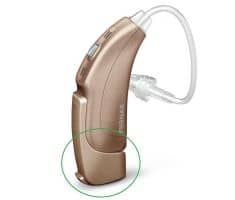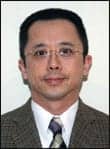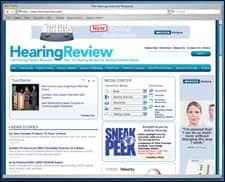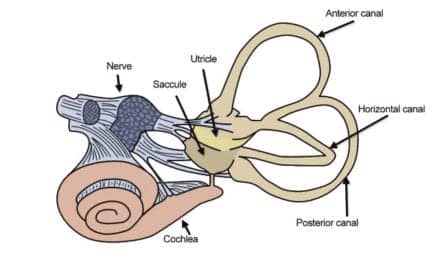Continuing research, as well as customer service and satisfaction, are components that keep Starkey Laboratories in the forefront of the highly competitive hearing-aid business.

Starkey Laboratories Inc, now the world’s largest manufacturer of custom hearing aids, began in the basement of owner William Austin’s home. That was where Austin struggled to put in force a repair warranty that would become the industry standard. From those beginnings, it was on to manufacturing, and these days Starkey has assumed a leading role in the development of low-power digital hearing devices—devices that for the user soon may be like having a wireless technical linkup in your ear canal.
The hearing aid business is tough. As in other tough businesses, many are called but few are chosen. Starkey Laboratories is one of the chosen ones, because, from its very birth, it has stressed customer service. In an industry where customers can be reluctant, demanding, and sometimes overly hopeful, customer service is no easy task. A fitting that is off by the thickness of a coat of paint or two can cause a device to hiss; a too-tight fitting can be painful for the wearer. Adjustments are a constant part of the business landscape, and the wearer often has to make a commitment to relearn how to hear with an aid, after years of slowly growing accustomed to a hearing loss.
“People aren’t sitting at home dreaming of the opportunity to wear a hearing aid,” says Starkey president Jerry Ruzicka. “We have to serve them at a very high level, and when we do that, they are delighted by the result.” But it is a process, Ruzicka adds. “Audiograms can be misleading as to what the customer needs. Hearing aids are not something that you plug ‘n’ play.”
Starkey Laboratories has its headquarters in the Minneapolis-St Paul suburb of Eden Prairie, Minn. Today, it has manufacturing and service facilities at 36 locations in the United States and around the world. Last year, according to Ruzicka, it had gross revenues of about $350 million, making it the world’s largest manufacturer of custom-fitted hearing devices. It is not a public company; its founder, William (Bill) F. Austin, owns it. Austin is a hands-on CEO who personally does hundreds of device fittings each year, especially for needy children.
The hands-on attitude is everywhere at Starkey; Ruzicka himself began with the company as an electronics technician 25 years ago, at a point when Starkey was grossing less than $10 million annually.
In 1971, 4 years after starting the Professional Hearing Aid Service that was his original venture, Austin purchased a small ear-mold company, Starkey Laboratories, in Minneapolis. He merged the two companies, kept the Starkey name, and ventured into manufacturing. In 1973 Starkey released its first custom in-the-ear hearing aid, which carried a 90-day free trial and a 1-year warranty. It did not take Starkey long to become the leading producer of custom hearing aids in what was then a dramatically growing industry. In 1975, Starkey opened its headquarters in Eden Prairie. Starkey grew rapidly and went on to manufacture audiometers and other diagnostic equipment in addition to its hearing aids.
Fit for a President
For all the progress in the industry, hearing aids remained a tough sell. Despite the fact that hearing loss from noise is common among younger and middle-aged people, hearing aids were seen as something that older people wore, says Ruzicka. Visible, behind-the-ear models were considered an embarrassment by many would-be users. Then in 1983, Starkey got a huge boost when it fitted a star patient with hearing aids. That patient was President Ronald Reagan. “When we fit Reagan, that caused the market to really explode,” Ruzicka says, “because people realized that hearing aids could be small and discreet.” The drive to make smaller and smaller aids characterized the 1980s and the early 1990s. In 1993, Starkey introduced a completely-in-the-canal (CIC) device that became and still is the industry leader, says Ruzicka. The smaller devices had one drawback, however—the technology was expensive. Starkey retained its corporate independence, but in the industry there was consolidation of many competing manufacturers because of the expense in bringing miniaturized and increasingly sophisticated devices to market, Ruzicka notes.
Digital Technology Growth
No business operates without hurdles, and for Starkey there were growth spurts that outstripped production capacity. Starkey also lost out to the competition in the race to bring the first digital hearing aids to market. Both of those hurdles were surmounted. The company learned to maintain quality by avoiding growth spurts, and it has now created a technological task force that has put out an array of digital devices that Ruzicka calls “the finest on the market.”
Tim Trine, PhD, a former professor of hearing science at Vanderbilt University, is now Starkey’s director of research. Trine heads up a team of 20 audiologists, engineers, and scientists responsible for what Trine calls “digital algorithm development.” The algorithms are the precise electronic instructions that let the newest devices monitor noise levels, for instance, and automatically adjust the sound volumes based on the individual needs of the wearer. Until recently, the mechanical hearing devices themselves were the focus of improvements, but, as in so much else, the focus has now shifted from hardware to software, Trine says. “It’s become the software on the hardware, rather than the hardware itself—and that’s a fundamental change for the industry.”
Trine says Starkey’s software is thoroughly tested in laboratory and clinical trials before it is ever released to the end user. “One thing that sets us apart,” he says, “is that we do a thorough job of evaluating the software logic before we put it into the product.” He emphasizes that the software must be designed for both the device and the diagnostician’s computers that make adjustments for the individual patient. “The PC software is an integral component, and that’s for the dispenser and the audiologist.”
Starkey launched its digital research effort about 4 1/2 years ago, and already, Trine says, the company’s digital products are the equal of any manufacturer’s.
One area where Starkey has worked very hard is in what Trine calls “applied DSP implementation.” DSP stands for digital signal processor, and Starkey has developed an “open platform DSP” that allows it to buy signal processing chips from a manufacturer and then program those chips to meet the needs for various hearing problems. Trine says the company has been absolutely ruthless in proving out software before it is ever marketed. “That’s the strongest thing we’ve done,” he says. “We don’t include anything in our products for which we cannot prove the efficacy. We had a couple of things in the past that we thought were advances, but we were wrong. We could have released and marketed them, which the hearing-aid industry has been guilty of in the past, but we’ve taken a very firm line that we’re not going to do that. If the technology doesn’t provide a user benefit, then we won’t put that technology in the product.”
Challenges Ahead
President Jerry Ruzicka says that he is proudest of the company’s ability to adapt to the needs of customers as it grew. “In the early days, we were a real strong marketing company, when Bill was working to eliminate risks for the customer. Then, after we fit Reagan, we became a very strong manufacturing company. Now we’re becoming a very technology-driven company. People think hearing aids make things louder, but now they’re being designed to let you hear better in various situations.”
As it has adapted its business, Starkey has also expanded internationally. It manufactures and services in Europe, Asia, South America, and Australia, as well as North America.
Marketing Overseas
Marketing in foreign countries has its difficulties. “Overseas, hearing aids are supported with government funding. These governments are pulling back on their funding and often dictating the technology that they want included. But we are the technology drivers, and we find that this can be very limiting. They might eliminate freedom of choice for consumers who could afford better hearing aids. We’d like to see an open market where consumers are involved. They know what they need, and they are the smartest shoppers. The United States has generally been very open in terms of the market, and that is why it’s the best market in the world,” Ruzicka says.
Starkey, Ruzicka adds, will remain true to its emphasis on customer service wherever it operates. “This business is very service-oriented,” he says. “People wait a long time to address a hearing loss, but when they finally do, they want the product quickly. What separates us is the support we provide. We stand behind our hearing aids at a much higher level than the warranty on whatever new car you just bought.”
George W. Wiley is a contributing writer for Hearing Products Report.





